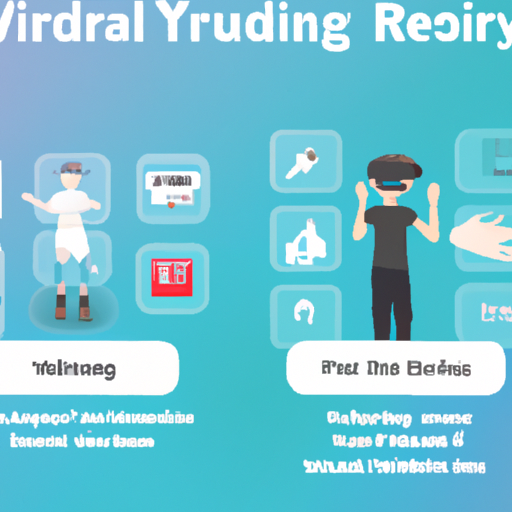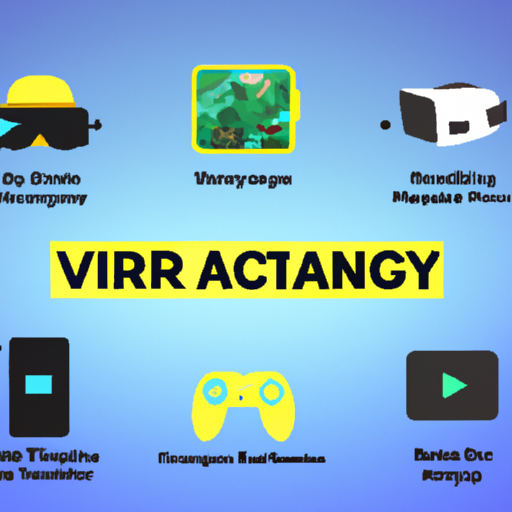-
Table of Contents
“Unlock the Future of Military and Defense with VR/AR Technology.”
Introduction
Virtual Reality (VR) and Augmented Reality (AR) are rapidly becoming a major part of the military and defense sector. These technologies are being used to improve training, increase situational awareness, and reduce costs. VR and AR can also be used to simulate dangerous scenarios, allowing soldiers to practice and prepare for real-world situations. Additionally, these technologies can be used to create immersive experiences that can help soldiers better understand their environment and the people they are interacting with. As the technology continues to evolve, the military and defense sector will continue to benefit from the use of VR and AR.
Exploring the Potential of VR/AR for Military Cybersecurity
The military is increasingly turning to virtual reality (VR) and augmented reality (AR) technologies to enhance its cybersecurity capabilities. As the world becomes more connected, the need for robust cybersecurity measures has become paramount. VR and AR offer a unique set of tools that can be used to protect military networks and systems from malicious actors.
VR and AR can be used to create immersive training environments for military personnel. By simulating real-world scenarios, personnel can gain experience in dealing with cyber threats without having to risk their own systems. This type of training can help personnel develop the skills and knowledge necessary to identify and respond to cyber threats.
VR and AR can also be used to create virtual networks that can be used to test the security of military systems. By creating a virtual environment, security teams can test the effectiveness of their security measures without risking the integrity of their actual networks. This type of testing can help identify potential vulnerabilities and allow teams to develop strategies to mitigate them.
Finally, VR and AR can be used to create virtual simulations of military networks. These simulations can be used to test the effectiveness of security measures in a controlled environment. This type of testing can help identify potential weaknesses and allow teams to develop strategies to address them.
In conclusion, VR and AR offer a unique set of tools that can be used to enhance military cybersecurity. By creating immersive training environments, testing virtual networks, and simulating military networks, VR and AR can help personnel develop the skills and knowledge necessary to protect military systems from malicious actors.
Examining the Impact of VR/AR on Military Logistics
The use of virtual reality (VR) and augmented reality (AR) technologies in military logistics is rapidly increasing. As these technologies become more advanced, they are being used to improve the efficiency and effectiveness of military operations. This article will examine the impact of VR/AR on military logistics, including the potential benefits and challenges associated with their use.
VR and AR technologies have the potential to revolutionize military logistics. By providing a virtual environment, these technologies can enable military personnel to practice and rehearse complex operations in a safe and controlled environment. This can help to reduce the risk of errors and improve the accuracy of operations. Additionally, VR and AR can be used to simulate real-world scenarios, allowing military personnel to gain experience in a variety of situations.
VR and AR can also be used to improve the efficiency of military logistics. By providing a virtual environment, these technologies can enable military personnel to quickly and accurately plan and execute operations. This can help to reduce the amount of time and resources required to complete tasks. Additionally, VR and AR can be used to provide real-time feedback on the progress of operations, allowing military personnel to make adjustments as needed.
However, there are also some potential challenges associated with the use of VR/AR in military logistics. For example, these technologies require a significant amount of data to be collected and processed in order to provide accurate simulations. Additionally, the use of VR/AR can be expensive, as the hardware and software required can be costly. Finally, there is the potential for security risks, as the data collected and processed by these technologies can be vulnerable to malicious actors.
In conclusion, VR and AR technologies have the potential to revolutionize military logistics. By providing a virtual environment, these technologies can enable military personnel to practice and rehearse complex operations in a safe and controlled environment. Additionally, VR and AR can be used to improve the efficiency of military logistics by providing real-time feedback on the progress of operations. However, there are also some potential challenges associated with the use of VR/AR in military logistics, including the need for a significant amount of data to be collected and processed, the potential for security risks, and the cost of the hardware and software required.
Exploring the Benefits of VR/AR for Military Reconnaissance
The use of virtual reality (VR) and augmented reality (AR) technologies in military reconnaissance has the potential to revolutionize the way military personnel gather and analyze data. By providing a more immersive and interactive experience, VR and AR can help military personnel gain a better understanding of their environment and make more informed decisions. In this article, we will explore the potential benefits of using VR and AR for military reconnaissance.
One of the primary advantages of using VR and AR for military reconnaissance is the ability to create a more realistic and immersive experience. By using VR and AR, military personnel can gain a better understanding of their environment and the potential threats they may face. This can help them make more informed decisions and better prepare for any potential threats.
Another benefit of using VR and AR for military reconnaissance is the ability to quickly and accurately analyze data. By using VR and AR, military personnel can quickly and accurately analyze data from a variety of sources, such as satellite imagery, aerial photographs, and other sources. This can help them make more informed decisions and better prepare for any potential threats.
Finally, using VR and AR for military reconnaissance can help reduce the risk of human error. By using VR and AR, military personnel can quickly and accurately analyze data without the risk of human error. This can help them make more informed decisions and better prepare for any potential threats.
In conclusion, the use of VR and AR for military reconnaissance has the potential to revolutionize the way military personnel gather and analyze data. By providing a more immersive and interactive experience, VR and AR can help military personnel gain a better understanding of their environment and make more informed decisions. Additionally, VR and AR can help reduce the risk of human error and quickly and accurately analyze data. As such, the use of VR and AR for military reconnaissance is an invaluable tool for military personnel.
How VR/AR Technology is Revolutionizing Military Training
The military has long been a leader in the use of technology to improve training and operations. In recent years, virtual reality (VR) and augmented reality (AR) have become increasingly important tools for military training. These technologies are revolutionizing the way the military trains its personnel, allowing for more realistic and immersive training experiences.
VR and AR technologies allow for the creation of realistic virtual environments that can be used to simulate real-world scenarios. This allows for more effective training, as personnel can practice in a realistic environment without the risk of injury or death. VR and AR can also be used to create virtual simulations of battlefields, allowing personnel to practice tactics and strategies in a safe environment.
In addition to providing a more realistic training experience, VR and AR technologies can also be used to improve the accuracy of training. For example, AR can be used to overlay virtual objects onto a real-world environment, allowing personnel to practice with more realistic targets. This can help to improve accuracy and reduce the risk of friendly fire incidents.
VR and AR technologies can also be used to improve the safety of training exercises. For example, AR can be used to provide personnel with real-time information about their environment, such as the location of friendly forces or potential threats. This can help to reduce the risk of friendly fire incidents and other accidents.
Finally, VR and AR technologies can be used to improve the efficiency of training. By providing personnel with a more realistic and immersive training experience, they can learn more quickly and retain more information. This can help to reduce the amount of time needed for training and improve the overall effectiveness of the training program.
In conclusion, VR and AR technologies are revolutionizing the way the military trains its personnel. These technologies allow for more realistic and immersive training experiences, as well as improved accuracy and safety. They can also help to improve the efficiency of training, allowing personnel to learn more quickly and retain more information. As these technologies continue to develop, they will no doubt become even more important tools for military training.
Conclusion
The use of VR/AR in the military and defense sector has the potential to revolutionize the way that military personnel train and operate. It can provide a more immersive and realistic training experience, as well as a more efficient way to plan and execute missions. Additionally, it can be used to create virtual simulations of battlefields and other environments, allowing for more accurate and realistic training scenarios. As the technology continues to develop, it is likely that VR/AR will become an increasingly important tool for the military and defense sector.




